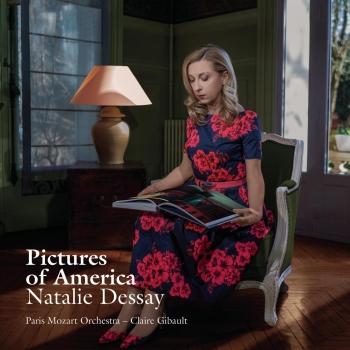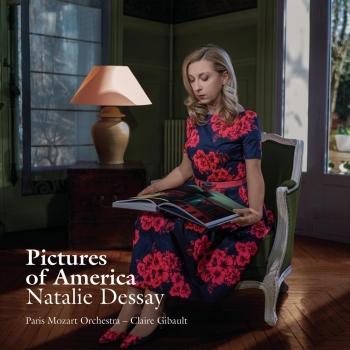Natalie Dessay
Biographie Natalie Dessay
Natalie Dessay
is one the stars of today’s operatic world, thrilling audiences as both a singer and an actress.
Now an admired interpreter of bel canto and lyric heroines such as Violetta (La traviata), Lucia di Lammermoor, Marie (La Fille du régiment), Amina (La sonnambula), Pamina (Die Zauberflöte), Manon, Juliette, Ophélie (Hamlet) and Cleopatra (Giulio Cesare), Dessay originally made her reputation with showpiece coloratura roles such as Offenbach’s Olympia, Mozart’s Queen of the Night and Strauss’ Zerbinetta.
Born in Lyons in 1965, Natalie Dessay grew up in Bordeaux. She first dreamed of becoming a dancer, but later studied acting and singing at the Bordeaux Conservatoire. She progressed with extraordinary rapidity, completing five years’ worth of study in just one year and graduating with First Prize at the age of twenty. In 1989, after a brief period in the chorus of the Théâtre du Capitole de Toulouse, she entered France’s first Concours des Voix nouvelles and won second prize. This led Dessay to further studies at the Paris Opéra and also brought her to the attention of the agent Thérèse Cédelle – still her agent today – and to her first major engagements as a soloist.
In 1992 she sang her first Olympia in Offenbach’s Contes d’Hoffmann at Paris’s Opéra Bastille in a staging by Roman Polanski. The next year she was invited to the Vienna Staatsoper to sing Blondchen (Die Entführung aus dem Serail). In 1993 she was Olympia in the opening production for the rebuilt Opéra de Lyon and by 2001 she had performed the role in eight different stagings of Hoffmann, including her debut appearance at La Scala. The 1990s also brought the Queen of the Night at Aix-en-Provence, Ophélie (Hamlet) in Geneva (she also sang the role at London’s Royal Opera House and at Barceona’s Liceo in 2003, where the production was filmed for DVD), Aminta (Die schweigsame Frau) in Vienna, Fiakermilli (Arabella) for her debut at the New York Met, which was soon followed by Olympia and Zerbinetta, Lakmé at Paris’ Opéra Comique (she recorded the role for EMI Classics with Michel Plasson), Eurydice in Offenbach’s Orphée aux Enfers in Lyons (also recorded for EMI Classics), and, in Paris, Morgana in Handel’s Alcina and the title role in Stravinsky’s Le Rossignol (also to be seen on DVD). Conductors for these appearances included Pierre Boulez, James Levine, James Conlon, William Christie and Marc Minkowski.
In 2001 the soprano’s career entered a new phase when she realised a long-held ambition to perform Donizetti’s Lucia di Lammermoor, a role she subsequently sang in 2004 in Chicago, in 2006 at the Bastille in a powerful staging by Andrei Serban, and in a new production for the opening of the New York Metropolitan’s 2007-8 season on 24th September 2007, which was broadcast on a giant screens at Lincoln Centre and Times Square. She also recorded the French version of the opera. More Donizetti, La Fille du régiment, provided a triumph for her in 2007 in Laurent Pelly’s witty staging in London, Vienna and New York. The British performances led to a Laurence Olivier Award for Outstanding Achievement in Opera for Dessay, and to a DVD-release which has proved an international bestseller.
In 2008 Natalie Dessay returned to the Metropolitan for revivals of Lucia and of La Fille du régiment, which was broadcast live in high definition to hundreds of cinemas around the world. In the autumn of the same year she triumphed as Manon (a role she first sang in Geneva in 2004) at Chicago Lyric Opera opposite Jonas Kaufmann as Des Grieux; this was in David McVicar’s production of Massenet’s opera, also staged in Barcelona, where it was recorded for DVD with Rolando Villazón as Des Grieux.
January 2009 brought Natalie Dessay’s first Mélisande at the Theater an der Wien in Vienna, directed by Laurent Pelly (a DVD of this Pelléas et Mélisande was released in November 2009). More firsts followed in 2009 with Violetta in the summer in Santa Fe and Musetta at the Opéra de Paris in the autumn. In 2010, Paris mounted a new production of La Sonnambula for Dessay, six years after her first appearances as Bellini’s heroine in Santa Fe; her interpretation of Amina was recorded during concert performances in Lyon in November 2006 and released in autumn 2007. In 2009 Dessay assumed the role of Amina again, this time in a new production at the Metropolitan Opera. Another new production of La sonnambula, seen in both Paris and Vienna, followed in 2010. 2011 brought her first Cleopatra in Handel’s Giulio Cesare, again at the Opéra de Paris, in a staging conducted by Laurent Pelly and conducted by Dessay’s frequent colleague Emmanuelle Haim. In summer 2011, the Aix-en-Provence Festival brought Dessay in a new production of La traviata.
Natalie Dessay signed her first exclusive contract with EMI Classics in 1994 and, in addition to the recordings already mentioned, her catalogue includes discs of Mozart (a collection of arias and his Mass in C minor), songs and arias by Strauss, works by Monteverdi Bach and Handel (including a disc of arias from Giulio Cesare), all conducted by Emmanuelle Haïm, and collections of Italian arias, French arias and vocalises. Her 2-CD and DVD compilations Le Miracle d’une voix, released in 2006, have proved an enormous success, selling over 250,000 copies and showcasing her range of achievement as an artist.














